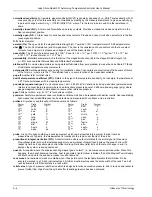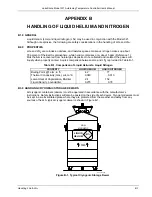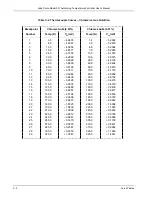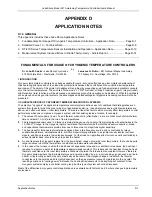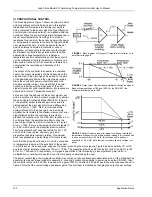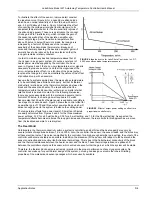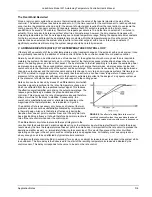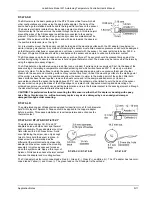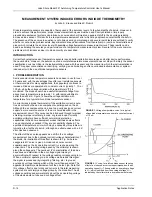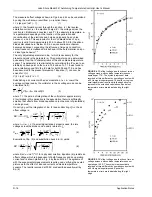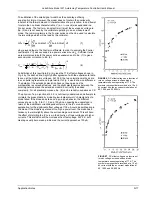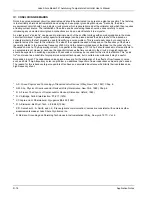
Lake Shore Model 321 Autotuning Temperature Controller User’s Manual
Application Notes
D-5
The Real World Revisited
Since a real cryogenic system has non-zero thermal resistance, the value of the reset is important in setup of the
controller. The amount of reset desired is dependent on: (1) the time required for the control sensor to reach equilibrium
once it enters the proportional band; and (2) the amount of output signal required from the reset action to overcome the
cooling power of the cryogenic system. For example, assume that 50% output is required and the time to reach
equilibrium is 3 seconds (.05 minutes). Therefore the repeats per minute is 10 and the time constant is 0.1 minutes. In
actuality, this is not easy to determine without a few tries. Almost always, however, the time constant increases with
increasing temperature so that if one is operating over a broad temperature range, finding the appropriate time constants
for the two extremes will bracket the appropriate time constants within that temperature range. Once the correct time
constant has been selected, the system should settle to its control set point within two or three time constants. If
significant overshoot is still occurring, the system design should be carefully reviewed.
V ADDING DERIVATIVE (RATE) TO THE TEMPERATURE CONTROL LOOP
If there is still an overshoot of the control temperature during transient changes of the set point within one's system, it can
be significantly reduced by the addition of a third control function to the controller, called rate or derivative control.
Normally, overshoot can be attributed to one of two causes: (1) the application of much more power than is required to
maintain the system at its desired set point; or (2) the result of the thermal response relationships between the cooling
power, the heating power, and the control sensor. The best solution to the first possibility is to reduce the available power
as discussed previously. The second problem normally occurs with a large thermal mass, where response is slow and
overshoot due to the thermal inertia of the system can be quite large. This overshoot is caused by the time lag between a
change in output power and the control sensor sensing this change. In very large non-cryogenic systems this time lag can
be 10-30 minutes. In cryogenic systems, it is usually less than a minute, even near room temperature. Consequently,
placement of the control sensor with respect to the heater is extremely important in the design of a cryogenic system, as
is the placement of both the heater and sensor with respect to the cooling power.
Rate action can be achieved by means of a differentiator circuit which
provides a signal proportional to the
rate
of temperature change, and
which is subtracted from the proportional output signal. This reduces
the effective overall amplifier gain driving the output power stage. The
reduced gain effectively increases the proportional band of the
controller. This slows down the rate of temperature rise and therefore
allows more time for the block to stabilize. Consequently, the
overshoot is substantially reduced or eliminated, depending on the
magnitude of the thermal problem, as is indicated in Figure 6.
The addition of rate is necessary only because of inherent thermal
problems which cannot be substantially eliminated by improvements
in thermal design. Also note that rate is effective only during the
transition from one set point to another. Near or at the set point, rate
has a destabilizing influence. It should therefore be normal practice to
turn off the rate control when near the control point.
The differentiator circuit should precede the reset integrator in the
circuit so that the deviation and derivative signals acting on the integrator input will be just sufficient to create the proper
reset value by the time the temperature reaches set point. In some cases, it is important for the rate circuit to precede the
deviation amplifier as well, i.e., immediately following the sensor input. This would then prevent the rate circuit from
operating on
changes
in the set point, such as in temperature seep applications. Fortunately, most sweeping is done
slowly enough so as to be unaffected by typical rate time constants.
To determine the rate control setting (in seconds) for a system, an abrupt increase in power is applied to the system while
in equilibrium. The time delay is then observed to the start of the resulting temperature increase as indicated by the
control sensor. This delay corresponds to the value to be set on the rate control.
FIGURE 6.
The effect of adding Rate to the control
circuit to dynamically widen the proportional band and
reduce the overshoot which would occur in its absence.


